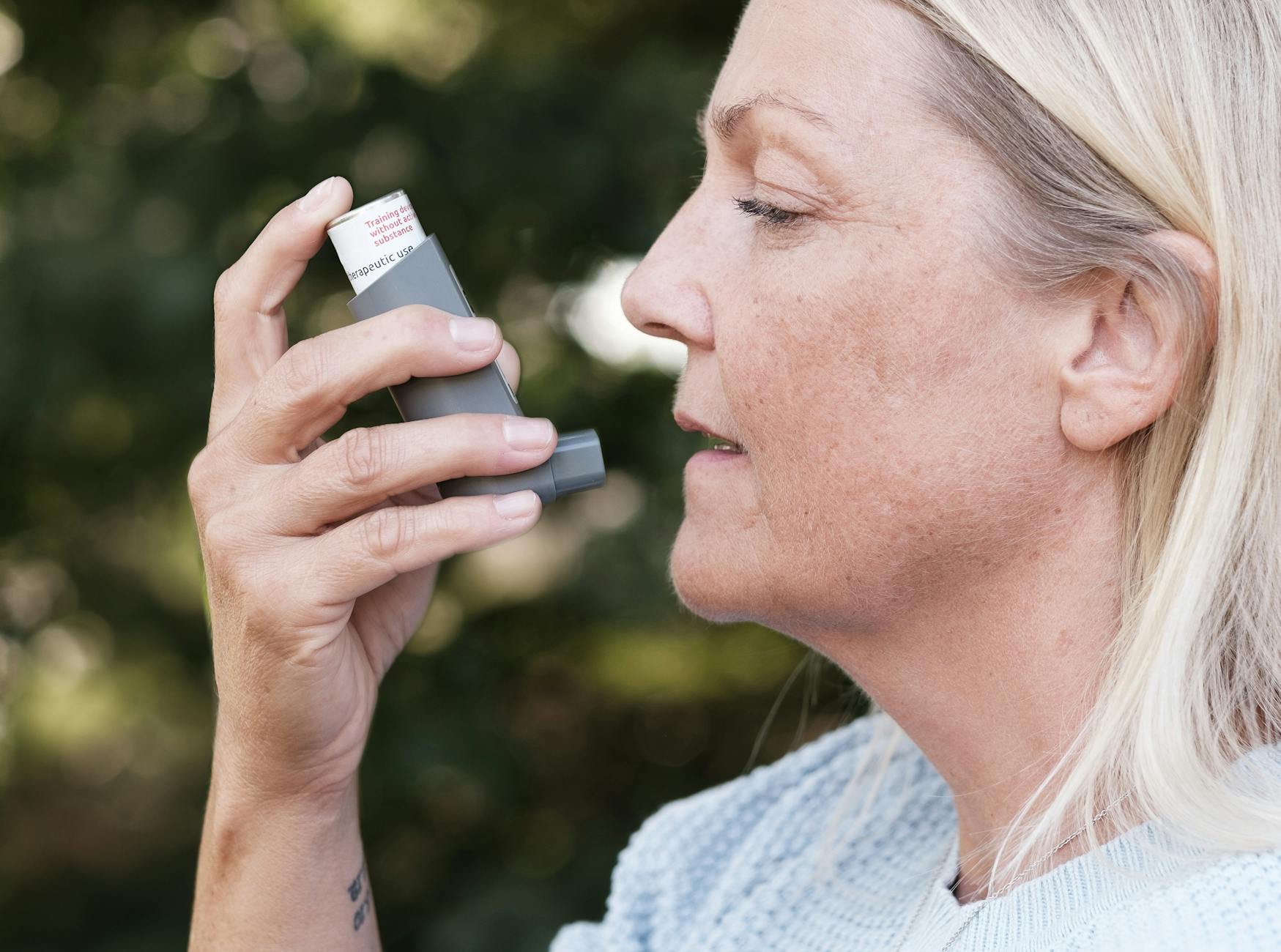Weather change allergies can make your symptoms worse during certain shifts in the environment. Have you ever noticed your allergies getting worse during specific weather changes? You’re not alone. Shifts in temperature, humidity, and even wind can play a major role in triggering or intensifying allergy symptoms. From spring pollen to fall ragweed, the air we breathe changes with the seasons, often bringing a surge in allergens. But that doesn’t mean you’re powerless. In this post, we’ll explore why these changes affect you and practical steps you can take to manage your symptoms effectively.
How Weather Influences Allergy Triggers
Weather plays a significant role in how weather change allergies affect us. Environmental factors like humidity, temperature shifts, wind, and even thunderstorms can make symptoms better or worse—sometimes dramatically so. Understanding these connections can help you prepare for seasonal challenges and alleviate discomfort effectively.
The Role of Humidity and Temperature Fluctuations
Have you ever noticed allergy symptoms worsening on a particularly damp or dry day? Humidity levels and temperature fluctuations can directly impact allergen levels in the air and how your body responds to them.
- High humidity creates a perfect breeding ground for mold spores, which thrive in moist conditions. Indoor spaces, like bathrooms and basements, become hotspots for mold growth, contributing to allergic reactions. Outdoor mold is an issue too, especially after rainy, humid weather.
- Low humidity, on the other hand, can dry out your nasal passages and airways. This drying effect weakens natural defenses, making these areas more susceptible to common irritants like pollen and dust mites.
To maintain comfort, consider using indoor humidifiers or dehumidifiers to regulate air moisture. Keeping environments balanced—neither too dry nor excessively damp—can reduce exposure to triggers.
Impact of Wind and Rainfall on Allergens
Weather conditions like wind and rain can dramatically influence the behavior of allergens, significantly impacting weather change allergies.
- Windy conditions are notorious for spreading airborne allergens like pollen and mold spores, which play a major role in weather change allergies. Even on days when you can’t see it, the gusty air carries irritants that can cause sneezing, congestion, or itchy eyes. If you’re heading outdoors, wearing sunglasses or a mask can help reduce exposure.
- Rainfall provides temporary relief by washing pollen out of the air. This is why some allergy sufferers feel better right after a good rain shower. However, things get tricky when the damp conditions afterward lead to an increase in mold growth.
If you’re sensitive to mold or pollen, keep an eye on local weather and pollen forecasts. Adjusting your outdoor activities based on these patterns is an easy step to keep symptoms manageable.

Small child with lowered face mask covering face by hands while sneezing on street
Photo by Gustavo Fring
Thunderstorm Asthma
Did you know thunderstorms can trigger weather change allergies or even asthma-like symptoms for some people? This phenomenon, known as “thunderstorm asthma”, happens when rain and strong winds break pollen particles into smaller fragments. These tiny particles can penetrate deeper into the respiratory system, making them more likely to cause breathing difficulties—one of the key concerns of weather change allergies.
What are the risks during a thunderstorm? Those who are highly sensitive to pollen—or who have asthma—are at greater risk because they’re more prone to inhale these fragments deeply. Symptoms can include wheezing, chest tightness, and shortness of breath, all common issues linked to weather change allergies.
During stormy weather, it’s a good idea to stay indoors, especially if thunderstorms are predicted in high-pollen seasons. Air purifiers can also help improve indoor air quality and reduce allergen exposure.
By understanding how everyday weather impacts allergens, you can take proactive steps to minimize their effect, ensuring that you breathe easier no matter what conditions roll in.
The Role of Climate Change in Allergy Severity
Climate change isn’t just affecting global temperatures and weather patterns; it’s also turning allergy season into an endurance test. As the planet warms, we’re seeing longer growing seasons, higher pollen counts, and intensified urban pollution—all of which conspire to make your weather change allergies worse. Let’s break down how these changes are contributing to the sneezing, itching, and watery eyes that so many of us experience.
Longer Growing Seasons for Allergen-Producing Plants
Warmer weather and earlier spring seasons mean flowering plants, trees, and grasses have more time to release pollen, intensifying weather change allergies. In fact, studies show that over the last few decades, the pollen season in many parts of the world has lengthened by several weeks, worsening weather change allergies for many sufferers. This extended period gives allergenic plants, like ragweed, more time to grow and produce pollen, leading to higher concentrations in the air.
- Earlier spring seasons: Rising global temperatures are causing plants to bloom earlier in the year, which means pollen starts circulating sooner. Allergy sufferers may find symptoms starting months earlier than they used to, a clear effect of weather change allergies.
- Prolonged growing periods: An extended season also means we’re exposed to allergens longer. This “extended handshake” with irritants like grass and tree pollen, mold spores, and even weeds, increases allergy burdens and exacerbates weather change allergies.
For allergy sufferers, longer growing seasons translate into more days spent battling symptoms, and the effects aren’t limited to spring or summer. Fall allergens, like ragweed, can linger well into November in some regions.

Photo by Markus Spiske
The Urban Heat Island Effect and Pollution
If you live in a city, you might notice your weather change allergies are often worse than when you’re in rural areas. That’s partly because of the urban heat island effect. Cities trap heat due to concrete, asphalt, and buildings that retain warmth, leading to higher temperatures when compared to surrounding rural areas, which can intensify weather change allergies.
Urban heat not only exacerbates pollen production but also amplifies air pollution. This combination creates a cocktail of allergens and irritants that are hard to escape. Here’s how it affects you:
- Increased pollen production: Higher urban temperatures encourage allergenic plants to thrive, releasing even more particles into the air.
- Poor air quality: Pollutants like nitrogen oxides from vehicle emissions combine with pollen, creating potent particles that can worsen your symptoms. Air quality in cities is often poor, making it harder for people with allergies and asthma to breathe easily.
This double whammy of pollen and pollution is particularly damaging for those with respiratory sensitivities like asthma, making urban areas a “hot zone” for allergy sufferers.
Increased CO2 Levels and Pollen Production
Carbon dioxide is often a silent contributor to worsening allergies. While CO2 might make plants grow more lushly, it’s also fueling the production of more pollen—which means more misery if you’re prone to allergies.
- CO2 fertilization effect: Higher levels of atmospheric CO2 act as a nutrient for many allergenic plants, including ragweed. This accelerates plant growth, leading to larger plants and greater pollen output.
- Stronger allergens: Not only are plants producing more pollen, but the pollen is also becoming more potent. Research suggests that elevated CO2 levels can increase the allergenic properties of pollen, making it more capable of triggering a reaction.
In practical terms, this means what used to be a moderate allergy season might now feel downright unbearable. Plants like ragweed are notorious for thriving amidst high CO2 levels, producing pollen that lingers in the air and travels far distances, spreading the problem far beyond its source.
By understanding these shifts, it becomes clear that climate change isn’t just an abstract problem—it’s impacting your health directly.
Signs That Weather Changes Are Impacting Your Allergies
Understanding how shifting weather patterns influence your allergy symptoms is a crucial first step toward finding relief. Sneezing fits on windy days, itchy eyes during a drop in air pressure—these aren’t random. Recognizing the triggers that certain weather conditions amplify can help you take better control of your symptoms.
Recognizing Seasonal Patterns and Local Forecast Signals
Noticing specific patterns in your allergies? Changes in weather often intensify symptoms, but the exact effects depend on the season and environmental factors.
- Dry, windy days: Wind spreads pollen and mold, making your symptoms like sneezing, nasal congestion, and itchy eyes more intense. Outdoor activities can become a real challenge during these conditions.
- Rising humidity: High moisture in the air creates a fertile environment for mold and dust mites to thrive. This can worsen indoor allergies, especially for those with sensitive sinuses.
- Air pressure drops: If storms or rain are on the horizon, a dip in barometric pressure can trigger or intensify symptoms for many allergy sufferers, particularly those with sinus issues.
Keeping tabs on local pollen counts and air quality indexes is your secret weapon. Most weather apps provide this info, or you can check online resources dedicated to allergy forecasts. When pollen levels are high, consider avoiding outdoor activities during peak times, typically mid-morning and early evening.

Photo by Pavel Danilyuk
Conditions That Mimic Allergies
Not every sniffle or sneeze can be pinned to allergies. It’s easy to confuse allergy symptoms with other common conditions, like a cold, making proper management tricky.
Here are a few ways to spot the difference:
- Colds often come with a sore throat, mild fever, or body aches. Allergies rarely, if ever, cause these symptoms.
- Allergies commonly cause itchy, watery eyes and an itchy nose. These symptoms usually aren’t present during a cold.
- Duration is another clue. Colds typically last from 7 to 10 days, while allergy symptoms can persist for weeks or even months if the allergen remains present.
Getting the diagnosis right can save you from ineffective treatments. If symptoms persist beyond the usual duration of a cold or occur at the same time each year, allergies are likely the culprit. Consult your doctor or allergist for confirmation if you’re unsure.
Practical Tips to Manage Weather-Triggered Allergies
When the weather changes, so do the allergens in the air, often leaving allergy sufferers scrambling for relief. Managing these symptoms takes a mix of preparation and daily practices. From adjusting your environment to exploring natural remedies, there’s a lot you can do to ease the burden of allergies and breathe easier.
Environmental Controls
Managing your living space and day-to-day environment can make a significant difference in controlling allergy triggers. Small changes add up, and knowing when and how to adjust is key.
- Regulate humidity levels: Aim for an indoor humidity level of about 30–50%. Too much moisture can encourage mold and dust mites, while overly dry air may irritate your airways. Use a dehumidifier in damp spaces like basements, or an indoor humidifier during dry winters.
- Use air purifiers: Invest in a high-quality HEPA air purifier for your home, especially in rooms where you spend the most time, like the bedroom. These filters can trap allergens like pollen, dust, and pet dander, creating a cleaner breathing environment.
- Know peak times and avoid them: Pollen counts tend to be highest during early mornings and late evenings. On windy or high-pollen days, plan outdoor activities for mid-afternoon or after rain when pollen is washed away. Apps or local reports can help you track daily allergen levels.
By proactively managing your environment, you reduce exposure to triggers and create a safer haven, even when outdoor conditions are less forgiving.

Photo by Cnordic Nordic
Medical Treatment and Remedies
For immediate and longer-term relief, medical treatments are often a go-to for allergy sufferers. Options range from quick fixes to gradual, more permanent solutions.
- Over-the-counter options: Antihistamines like loratadine or cetirizine can quickly tackle symptoms such as sneezing, itching, and a runny nose. Nasal sprays, such as saline or steroid-based ones, help reduce inflammation and clear irritants from your nasal passages.
- Allergy shots and immunotherapy: If your allergies are severe or year-round, consulting an allergist might be worth it. Allergy shots and sublingual immunotherapy (under-the-tongue tablets) can help build long-term resistance to allergens.
- Consult a specialist: For chronic or unusual symptoms, an allergist can test for specific triggers and recommend advanced treatments tailored to your needs. They can also advise on prescription-strength options that go beyond what you’ll find at the pharmacy.
When used correctly and consistently, these treatments can transform how you cope with environmental allergens and improve your overall quality of life.
Natural and Alternative Solutions
If you prefer a more holistic approach or want to complement medical treatments, natural remedies can also be effective in minimizing allergy symptoms.
- Saline nasal rinses: These irrigations flush out allergens and clear your nasal passages. Devices like neti pots or saline sprays can be used daily to prevent buildup and reduce irritation.
- Herbal and dietary support: Adding anti-inflammatory foods to your meals—like ginger, turmeric, and foods rich in omega-3s—can bolster your immune response. Some herbal supplements, including butterbur or quercetin, have also shown potential in reducing allergy symptoms. Consult your healthcare provider before trying any supplement.
- Stay hydrated: Proper hydration helps thin mucus and keeps your nasal passages from becoming dry or irritated, making it easier to fight off allergens.
These natural strategies are easy to incorporate into daily life and can provide supplemental relief, especially for mild allergy symptoms.
By combining environmental adjustments, proven medical treatments, and natural remedies, managing weather-triggered allergies can become a lot less daunting. Keep experimenting with different methods to find what works best for you—it’s all about making small changes that add up to big relief.
Conclusion
Weather change allergies may be unavoidable, but managing your allergies doesn’t have to feel out of reach. By understanding how shifts in humidity, temperature, and other conditions influence allergens, you can stay one step ahead of your weather change allergies symptoms.
Make small adjustments to your home, monitor local forecasts, and consider treatments that fit your needs—whether it’s a daily antihistamine, an air purifier, or even exploring natural remedies. Knowing your triggers and taking proactive steps will make a big difference.
Allergies don’t have to control your life. Start applying these tips today and breathe a little easier, no matter what the forecast brings.


